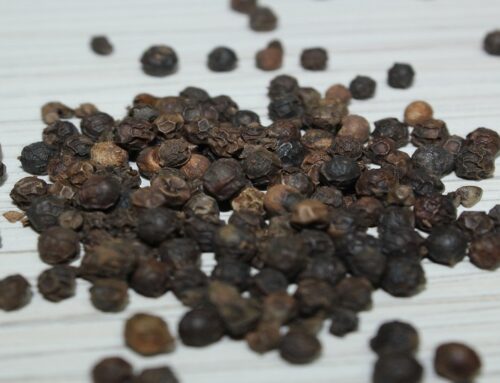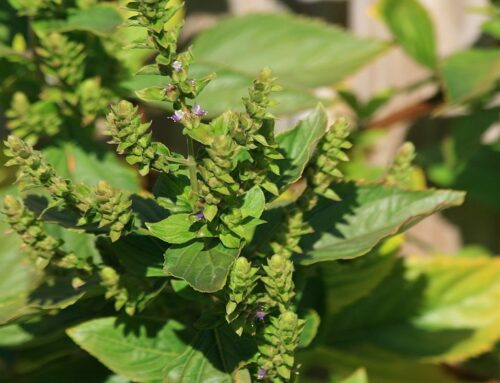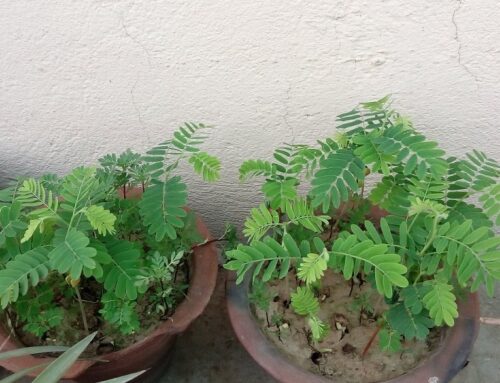Growing plants organically is becoming a healthy trend nowadays because of the eco-friendly growing practices adopted in organic agriculture. The products of organic agriculture are extremely safe to consume without fearing any dangers of pesticidal residues.
The key areas of organic agriculture is the use of planting materials of organic origin, the use of organic manures and fertilizers for plant nutrition, adopting integrated pest management technology for controlling insects and pests and integrated disease management for controlling disease and also using a lot of beneficial cultural practices such as crop rotation, companion planting, using trap crops etc for maintaining a healthy ecosystem in the growing fields.
Major steps involved in organic growing are:
- Choosing planting materials
- Preparing soil and enhancing soil fertility
- Integrated Pest Management and Integrated Weed Management
- Integrated Disease Management
- Other Cultural Practices such as Crop Rotation, Companion Planting, Using Trap Crops etc
Choosing Plant Materials: In organic production, we need to use planting materials of organic origin.
Preparing Soil: For growing any plants, as we all know, soil is the major growing medium. So soil should be fertile with all essential plant nutrients to support a healthy plant growth. Generally, soil fertility may be enhanced by the addition of organic manures and organic fertilizers.
In organic farming, seedlings are planted in a sterilized soil medium so that infestation of soil-borne plant pathogens can be prevented. Soil sterilization can be done by soil solarization method. Soil solarization is a method of trapping solar energy within the soil by covering the soil with a transparent polyethylene cover for a certain period of time. This practice kills all soil-borne plant pathogens.
After soil sterilization, methods need to be adopted to enhance soil fertility. This is accomplished through the addition of organic manures, compost, vermicompost and organic fertilizers.
Now, what is a fertilizer? Fertilizer is the term used to refer any material that provides essential nutrients for plant growth when applied externally, either by mixing with soil or by dissolving in the water. A fertilizer is rich in essential plant nutrients. Fertilizer may be either in solid form or in liquid form.
Fertilizer application is an important cultural practice while growing plants. It is the practice of adding fertilizers to the soil or any other growing media through direct broadcasting; or by direct mixing with the soil or through spraying of water-soluble fertilizers.
There are three types of fertilizers and these are Organic Fertilizers, Biofertilizers and Inorganic Fertilizers or Chemical Fertilizers. In organic farming practices, we do not use chemical fertilizers.
While growing plants organically, we generally use organic manures and fertilizers as well as biofertilizers. Any organic matter that may be used as an organic fertilizer is known as organic manure. Manures contribute to the fertility of the soil by adding organic matter and nutrients. There are three main classes of organic manures used in soil management: animal manures; compost and plant manures.
Animal Manures: Common forms of animal manure include farmyard manure (FYM) or farm slurry (liquid manure). FYM also contains plant material (often straw), which has been used as bedding for animals and has absorbed the feces and urine. Agricultural manure in liquid form, known as slurry, is produced by more intensive livestock rearing systems where concrete or slats are used, instead of straw bedding. Sheep manure is high in nitrogen and potash while animal manures like pig manures are relatively low in nitrogen and potash. Horse manure may contain lots of weed seeds, as horses do not digest seeds the way that cattle do. So using horse manure may result in a lot of weed infestation in the fields. Chicken manure, even when well rotted, is very concentrated and should be used sparingly for growing plants. Animal manures may also include other animal products, such as wool shoddy (and other hair), feathers, blood and bone etc.
Compost: Compost is a decomposed plant matter that is used as an organic fertilizer, soil amendment and as a source rich in humus. Compost is used in organic farming, gardening, landscaping, horticulture, and agriculture. It may be used as a natural pesticide for soil and is useful for soil erosion control, soil reclamation, and waste land management. Composting is a natural microbiological process of decomposing organic matter into humus and minerals. Microorganisms that aid composting process include bacteria, actinomycetes, fungi, protozoa and earthworms. Composting process can be accelerated by shredding the leaves and adding extra nitrogen on the shredded leaves. Adding water also hastens composting process. Proper aeration must be ensured by regularly turning the mixture. The composting process is entirely dependent on micro-organisms to break down organic matter into compost. Presence of a healthy microbial community is essential for rapid decomposition process. Lack of a healthy microbial community makes composting process very slow. With the proper mixture of water, oxygen, carbon, and nitrogen, micro-organisms work faster to break down organic matter to produce compost. Shredding leaves make a homogenous compost mixture with smaller particles. Smaller particles decompose faster as there are more surfaces for the microbes to work on. Particles should not be very small as very small particles may compact and restrict oxygen availability. A blend of small and large particles will be most efficient. Compost can be prepared by using traditional process or by using modern composting techniques. Traditional composting is a slow process and it takes about one year or more to finish the composting process. It is simple, sometimes requires simply piling up waste outdoors or in pits. Modern composting uses containers or composting bins for composting process. It is a multi-step, closely monitored process and it uses more homogenized pieces in the compost. It uses measured inputs of water, air and carbon- and nitrogen-rich materials and is a rapid process. Modern composting process takes about 2 to 3 weeks to complete.
Major considerations while preparing compost are: Carbon, Nitrogen and Oxygen. Microbial oxidation of carbon produces the heat required for decomposition process. Nitrogen is necessary as microbes grow and reproduce consuming nitrogen-rich plant materials. Oxygen is also an important element as microbes oxidize carbon using the oxygen present in the compost pile. Water should also be added as presence of water maintains life activities of microbes within the compost pile. Optimum temperature should be maintained throughout the composting procedure. Higher temperature may kill the microbes. At low temperatures, they may remain inactive. The most efficient composting occurs with a carbon: nitrogen mix of about 30 to 1. Plant and animal materials have both carbon and nitrogen. If nitrogen is less in a compost pile, use urea fertilizer or other nitrogen-rich materials.
Standard uses are: 1 lb. urea to 1 cubic yard. Leaves, 6 lb. urea to 1 cubic yard. wood clippings, 5 parts leaves to 1 part manure and dried blood meal, alfalfa meal at the rate of 2 cups to a wheelbarrow load of brown leaves or other carbon rich wastes such as shredded paper.
Moisture level should always be maintained at about 50%. Compost pile should always be moist and should never be kept dry. Overwatering should be avoided. Microbes need sufficient oxygen for decomposing compost. Since composting is an aerobic process, absence of oxygen causes anaerobic conditions causing a bad odor and partial decomposition of the compost. Hence it is essential that compost pile must be turned at regular intervals to facilitate aeration. Restrict size of the pile to no more than 5 ft. high and 5 ft. wide. Compost pile of 4×4 ft makes an ideal size. Optimum temperatures are between 100o and 140oF as higher temperatures than that may kill microbes. Composting at the center of the pile is complete when temperatures within the pile drop below 100o F. Once composting at the center is complete, turn the pile, putting outside edges inside and allow it to compost more.
Good compost will be dark in color; friable and porous and it will have an earthy smell. It is an excellent source of humus and plant nutrients and has good water holding capacity. Compost is used as an additive to soil and is used as a tilth improver, supplying humus and nutrients. It provides a rich growing medium and acts as a porous, absorbent material that holds moisture and soluble minerals, providing the support and nutrients in which plants can flourish. Compost may be mixed with soil, sand, grit, bark chips, vermiculite, perlite, or clay granules to produce loam.
Vermicompost: Vermicompost is the product of composting utilizing various species of worms. Red wigglers, white worms, and earthworms are used for vermicomposting. Vermicompost is a heterogeneous mixture of decomposed vegetable or food waste, bedding materials, and Vermicast. Vermicast, also known as worm castings, worm humus or worm manure, is the end-product of the breakdown of organic matter by species of earthworms. Red wigglers are recommended by vermiculture experts as they voraciously feed on compost pile and breed very quickly. Vermicompost contains water-soluble nutrients and is a nutrient-rich organic fertilizer and soil conditioner.
Green Manures: Green manures are crops grown for the express purpose of ploughing them in, thus increasing fertility through the incorporation of nutrients and organic matter into the soil. Leguminous plants such as clover are often used for this, as they fix nitrogen using Rhizobial bacteria in specialized nodes in the root structure. Leguminous cover crops are also grown to enrich soil as a green manure through nitrogen fixation from the atmosphere as well as phosphorus (through nutrient mobilization) content of soils. Other types of plant matter used as manure include the contents of the rumens of slaughtered ruminants, spent hops (left over from brewing beer) and seaweeds.
What Are Organic Fertilizers? Organic fertilizers are naturally occurring fertilizers and mineral deposits. Organic manures are just one form of organic fertilizers. Other examples of organic fertilizers are vermicompost or worm castings, compost, seaweed, guano, naturally occurring mineral deposits (e.g. saltpeter) etc. Processed organic fertilizers include compost, blood meal, bone meal, humic acid, amino acids, and seaweed extracts. Other examples are natural enzyme digested proteins, fish meal, and feather meal. Decomposing crop residue (green manure) is also used as an organic fertilizer. Mined powdered limestone, rock phosphate and sodium nitrate, are inorganic (not of biologic origins) compounds but are approved for usage in organic agriculture in minimal amounts.
Organic fertilizer nutrient content, solubility, and nutrient release rates are typically much lower than mineral (inorganic) fertilizers. All organic fertilizers are classified as ‘slow-release’ fertilizers, and therefore cannot cause nitrogen burn. Organic fertilizers are low-cost as compared to inorganic fertilizers. An organic fertilizer improves the biodiversity (soil life) and long-term productivity of soil and also increases the abundance of soil organisms by providing organic matter and micronutrients for organisms such as fungal mycorrhiza, which aid plants in absorbing nutrients.
Initially organic fertilizers may not be as effective as inorganic fertilizers but application of organic fertilizers become as effective as chemical fertilizers over longer periods of continuous use.
Some of the major advantages of organic fertilizers are as follows:
- Nitrogen supplying organic fertilizers contain insoluble nitrogen and act as a slow-release fertilizer
- Increase physical and biological nutrient storage mechanisms in soils, mitigating risks of over-fertilization
- Mobilize existing soil nutrients, so that good growth is achieved with lower nutrient densities while wasting less
- Release nutrients at a slower, more consistent rate, helping to avoid a boom-and-bust pattern
- Help to retain soil moisture, reducing the stress due to temporary moisture stress
- Improve the soil structure
- Help to prevent topsoil erosion
Some of the major disadvantages of organic fertilizers are as follows:
- Organic fertilizers may contain pathogens and other disease causing organisms if not properly composted
- Nutrient contents are very variable and their release to available forms that the plant can use may not occur at the right plant growth stage
- Organic fertilizers are comparatively voluminous and can be too bulky to deploy the right amount of nutrients that will be beneficial to the plants
- The nutrients in organic fertilizer are both more dilute and also much less readily available to plants
- As a dilute source of nutrients when compared to inorganic fertilizers, transporting large amount of fertilizer incurs higher costs, especially with slurry and manure
- The composition of organic fertilizers tends to be more complex and variable than a standardized inorganic product
- More labor is needed to compost organic fertilizer, thus increasing labor costs
- Reduce external inputs of pesticides, energy and fertilizer, at the cost of decreased yield
Plant Nutrition: Plants absorb nutrients from the soil or the atmosphere, or from water. Carbon and oxygen are absorbed from the air while other nutrients including water are obtained from the soil. Three ways of nutrient uptake are Simple Diffusion, Facilitated Diffusion and Active Transport. Plants absorb essential elements from the soil through their roots and from the air (mainly consisting of carbon and oxygen) through their leaves. There are 17 essential plant nutrients grouped into two categories: macro-nutrients and micro-nutrients.
Major macro-nutrients are carbon, hydrogen, oxygen, nitrogen, phosphorus, potassium, calcium, magnesium, sulphur and silicon. Major micro-nutrients are boron, copper, chlorine, iron, manganese, molybdenum and zinc. Trace elements like sodium, nickel and cobalt may also be needed in certain circumstances.
Macronutrients are taken by plants in large quantities and are present in plant tissue in quantities from 0.2% to 4.0% dry weight while micronutrients are needed in small quantities and are present in plant tissue in quantities measured in parts per million, ranging from 5 to 200 ppm, or less than 0.02% dry weight. In the absence of an essential element, the plant is unable to complete a normal life cycle. An essential element is a part of some essential plant constituent or metabolite. An element present at a low level may cause deficiency symptoms, while the same element at a higher level may cause toxicity. Deficiency of one element may present as symptoms of toxicity from another element. An abundance of one nutrient may cause a deficiency of another nutrient. A lowered availability of a given nutrient may affect the uptake of another nutrient. The root, especially the root hair, is the most essential organ for the uptake of nutrients.
Now let us have a look at various functions of plant nutrients in detail…
- Carbon: It is backbone of many plants biomolecules, including starches and cellulose and is a part of the carbohydrates that store energy in the plant
- Hydrogen: It is necessary for building sugars and building the plant and is obtained from water. It is necessary for electron transport chain in photosynthesis and for respiration
- Oxygen: It is necessary for cellular respiration
- Nitrogen: It determines green color and density in plant and is needed for chlorophyll, which is needed for photosynthesis. It also improves plant’s ability to resist disease and tolerate effects of heat, cold, and drought. Major deficiency symptom includes yellowing of leaves called chlorosis
- Phosphorus: It helps plants hold and transfer energy for metabolism and also affects cell division, root development, and flowering. Deficiency symptom includes purple coloring of leaves or stems
- Potassium: It activates enzymes and regulates opening and closing of stomata. It also regulates water uptake by root cells
- Calcium: It regulates transport of other nutrients into the plant and is involved in the activation of certain plant enzymes
- Magnesium: It is important part of chlorophyll and is important in the production of ATP through its role as an enzyme cofactor
- Sulphur : It is a structural component of some amino acids and vitamins and is essential in the manufacturing of chloroplasts
- Silicon: Silicon is deposited in cell walls and contributes to its mechanical properties including rigidity and elasticity
- Iron: It is necessary for photosynthesis ; Present as an enzyme cofactor in plants
- Molybdenum: It is a cofactor to enzymes important in building amino acids
- Boron: It is important for binding of pectins in the RGII region of the primary cell wall and also it plays a significant role in sugar transport, cell division, and synthesizing certain enzymes
- Copper: It is important for photosynthesis; Involved in many enzyme processes; Necessary for proper photosynthesis; Involved in grain production; Involved in the manufacture of lignin (cell walls)
- Manganese: It is necessary for building the chloroplasts
- Zinc: It is required in a large number of enzymes and plays an essential role in DNA transcription
- Chlorine: It is necessary for osmosis and ionic balance; Plays a role in photosynthesis
- Nickel: It is essential for activation of urease, an enzyme involved with nitrogen metabolism and it can substitute for Zinc and Iron as a cofactor in some enzymes
- Sodium: It is involved in the regeneration of phosphoenolpyruvate in CAM and C4 plants and it can also substitute for potassium in some circumstances
- Cobalt: It is essential for legumes for nitrogen fixation and it can substitute for molybdenum
We all know that under-nourishment of plants may lead to poor growth and development. But over-nourishment is also not good for plants. Over-fertilization or adding extra fertilizer doses to plants may lead to nutrient toxicity. Five types of nutrient toxicity are Chlorosis (yellowing of plant tissue caused by a shortage of chlorophyll synthesis), necrosis (death of plant tissues), accumulation of Anthocyanins (production of a purple or reddish colorization of foliage and/or stems), lack of new growth (stunting or reduced growth) and stunted new growth. So the thumb rule in fertilizer application is as follows:
Thumb rule in fertilizer application: Thumb rule is to apply right quantities of fertilizers at the right time using a right method. That is,
- Apply right quantities of fertilizers
- Apply fertilizer when the plants can best use the nutrients
- Apply small amounts of fertilizer frequently
- Be careful not to over fertilize
Integrated Pest Management: Another important organic growing practice is the use of IPM for pest management. Integrated Pest Management or IPM is a holistic approach for the control of pests using all available pest control practices such as cultural control, mechanical control, biological control and chemical control of pests while ensuring the safety of foods and the environment.
Similarly, for effective disease management, we can use IDM (Integrated Disease Management).
We have a book on ‘Mint Herbs‘….
Check out our publishing services here…
We publish top quality videos on various ‘Food & Agriculture’ topics. You may subscribe our video channel here…






